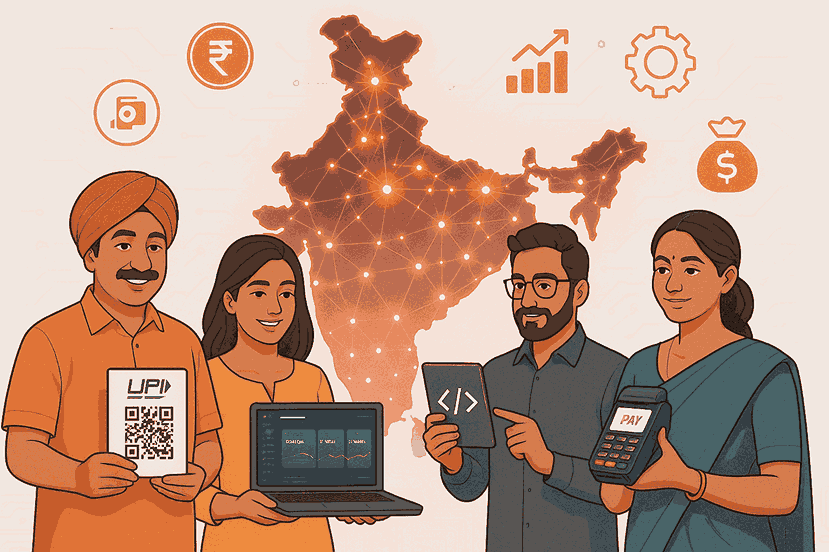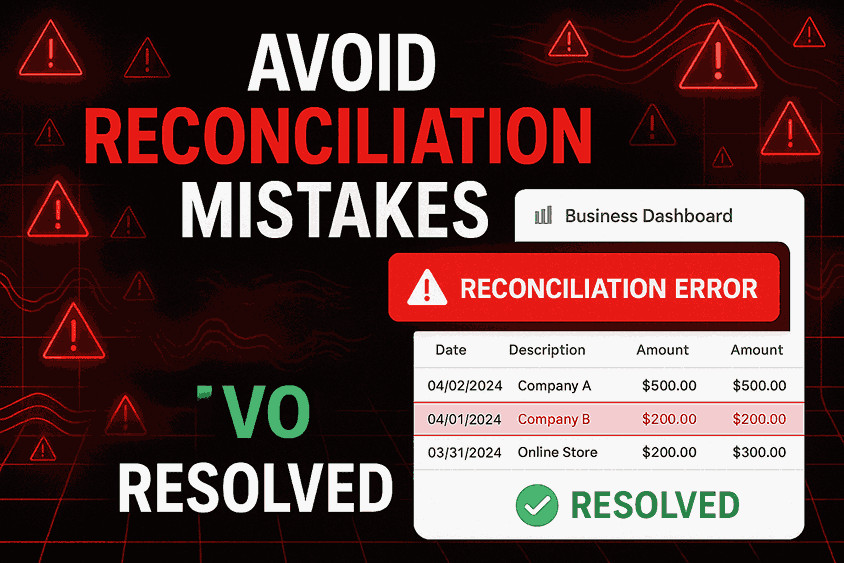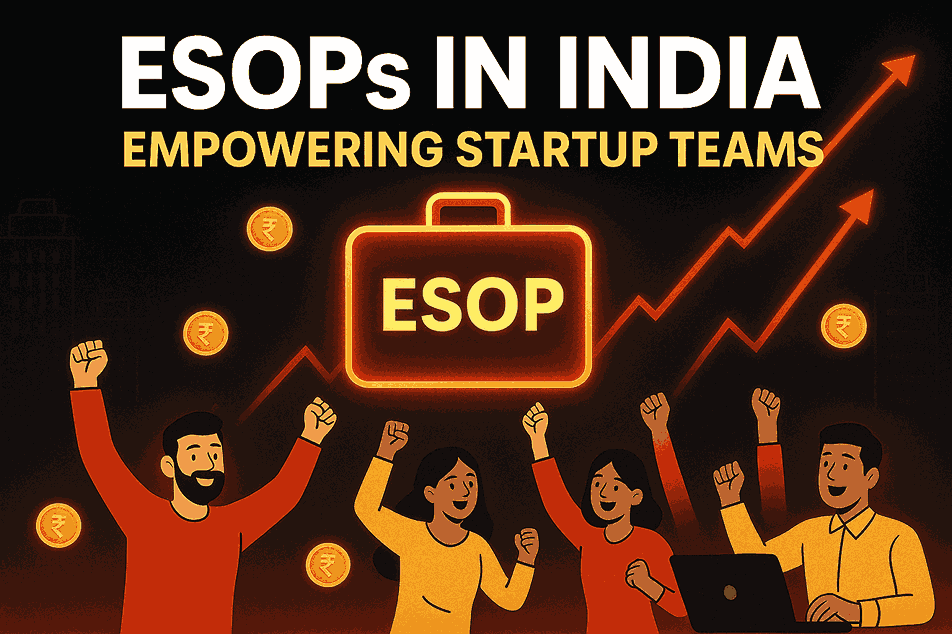How to Reconcile Payments Automatically

Automated Payment Reconciliation allows a business to synchronize its payments without the need for manual labor. Automated Payment Reconciliation allows a business to synchronize its payments without the need for manual labor. Simply put, the majority of users looking into this matter have only one desire: to find a straightforward, dependable method that helps eliminate errors, saves time, and maintains the accuracy of financial records.
Suppose you are worn out with the situation where your accounting records don't match, some entries are missing, or you have to spend a great deal of time verifying transactions across bank statements and payment gateways; then, automation is the answer to these problems. It performs a full integration of data from all sources, automatically matches transactions, visibly marks exceptions, and provides up-to-the-minute financial insight.
Check out our detailed guide here: SprintNXT Banking API Solutions.
Table of Contents
What is Payment Reconciliation?
Why Automation Matters Today
How Manual Reconciliation Works
What Is Automated Payment Reconciliation?
Benefits of Automating Payment Reconciliation
How Automated Payment Reconciliation Works Step-by-Step
Key Technologies Used in Automated Reconciliation
Best Practices for Implementing Automated Reconciliation
Tools and Software for Automatic Payment Reconciliation
Common Challenges and How to Solve Them
How Automated Reconciliation Helps Different Industries
Future of Payment Reconciliation
Conclusion
FAQs
What Is Payment Reconciliation?
Payment reconciliation is the process of matching your internal financial records with external statements, such as bank statements, payment gateway reports, and invoices. It ensures that every payment received or sent is recorded accurately.
Read more: Types of Payment Gateways in India
Why Automation Matters Today
With businesses processing payments from many channels, including UPI, cards, wallets, net banking, and marketplaces, manual reconciliation is too slow. Automation removes the chaos and provides real-time clarity.
Learn more: Complete UPI Collection API
How Manual Reconciliation Works
Before automation, companies relied on spreadsheets, calculators, and considerable patience.
Drawbacks of Manual Payment Reconciliation
Time-consuming
Highly prone to human error
Difficult to scale
No real-time visibility
Risks Involved in Manual Processes
Manual reconciliation often leads to:
Misclassified payments
Undetected fraud
Duplicate entries
Delayed financial reporting
What Is Automated Payment Reconciliation?
Automated reconciliation uses software to connect payment sources, match entries, detect errors, and generate automated reports without manual intervention.
Key Features of Automation
AI-based matching
Rule-based processing
API integrations
Auto-generated reports
How Automated Tools Match Transactions
Advanced systems analysis:
Payment amount
Transaction ID
Timestamp
Customer details
The system then automatically matches these entries with internal records.
Read more: UPI Collection Solutions
Benefits of Automating Payment Reconciliation
Saves Time and Cost
What previously took days can now be done in minutes.
Reduces Human Errors
Automation eliminates manual mistakes and enhances accuracy.
Improves Cash Flow Visibility
Real-time dashboards help finance teams make smarter decisions.
Enhances Business Efficiency
Teams can focus on strategy instead of repetitive tasks.
How Automated Payment Reconciliation Works Step-by-Step
Step 1 – Data Import from Multiple Sources
The system pulls data from:
Banks
ERPs
Invoices
Step 2 – Automatic Matching Algorithms
AI algorithms match entries with high accuracy.
Step 3 – Flagging Exceptions
Unmatched or suspicious transactions are highlighted for review.
Step 4 – Auto-Approval and Reporting
Matched entries get approved automatically, and reports are generated instantly.
Key Technologies Used in Automated Reconciliation
AI and Machine Learning
These technologies help predict and match transactions intelligently.
APIs and System Integrations
APIs connect your payment sources with your accounting tools.
Cloud-Based Accounting Tools
Cloud platforms ensure easy access and real-time updates.
Best Practices for Implementing Automated Reconciliation
Choose the Right Software
Pick a tool that supports your integrations and payment volume.
Clean and Organize Existing Data
Messy data equals messy reconciliation.
Set Clear Reconciliation Rules
Define matching criteria to ensure accuracy.
Train Your Finance Team
Make sure the team understands how the system works.
Tools and Software for Automatic Payment Reconciliation
Accounting Software
Examples: QuickBooks, Tally Prime, Zoho Books.
Payment Gateway Tools
Payment gateways like Razorpay, Stripe, and PayU provide automatic reconciliation dashboards.
ERP Platforms
ERP systems simplify large-scale reconciliation.
Fintech API Solutions
APIs provide real-time payment verification and matching for businesses.
Learn more: How API Integrations Work in Embedded Finance
Common Challenges and How to Solve Them
Data Mismatch Issues
Use standardized formats to avoid discrepancies.
Duplicate Transaction Detection
Automation tools can detect and remove duplicates.
Integration Failures
Test integrations thoroughly before going live.
How Automated Reconciliation Helps Different Industries
E-commerce
Manages thousands of daily transactions effortlessly.
SaaS Companies
Automates subscription billing and recurring payments.
Retail and Wholesale
Helps maintain accurate cash flow visibility.
Financial Institutions
Improves regulatory compliance and reduces fraud.
Read more: Payment Methods Explained
Future of Payment Reconciliation
AI-Driven Forecasting
AI will predict reconciliation mismatches before they happen.
Real-Time Ledger Updates
Instant accounting entries powered by APIs.
Increased Automation Across Finance
Nearly all financial processes will run on autopilot.
Conclusion
Automated payment reconciliation is no longer optional- it’s essential. It helps businesses save time, avoid mistakes, and improve financial transparency. With the right tools, your business can achieve lightning-fast reconciliation and better financial control.
Learn more: 10 Proven Strategies for SMEs to Automate Payments
Frequently Asked Questions: Automatic Payment Reconciliation
What is automatic payment reconciliation?
It’s a system that matches payment records automatically using software and AI.
Is automated reconciliation accurate?
Yes, it reduces human errors and provides high accuracy.
Does it work with all payment gateways?
Most modern reconciliation tools integrate with major gateways and banks.
Can small businesses use automated reconciliation?
Absolutely-automation saves time and helps small teams operate efficiently.
Is automated reconciliation expensive?
Costs vary, but the time and accuracy benefits outweigh the investment.
What are the 3 C's of reconciliation?
The Catholic Sacrament of Reconciliation (also known as Penance, or Penance and Reconciliation) has three elements: conversion, confession, and celebration.
What is the process of payment reconciliation?
Payment reconciliation is the process of matching internal financial records with external statements, such as bank or payment gateway reports, to confirm that every transaction is accurate and accounted for.
What is automatic bank reconciliation?
Automatic bank reconciliation is the process where software connects to your bank account, imports transactions. It matches them with your internal records automatically-eliminating the need for manual checks and reducing errors.
What is the 5-step reconciliation process?
The 5-step reconciliation process includes:
Gathering external statements, such as bank statements, gateway reports, and invoices.
Collecting internal transaction records.
Comparing both sets of data.
Identifying mismatches or missing entries.
Correcting errors and updating records.




















